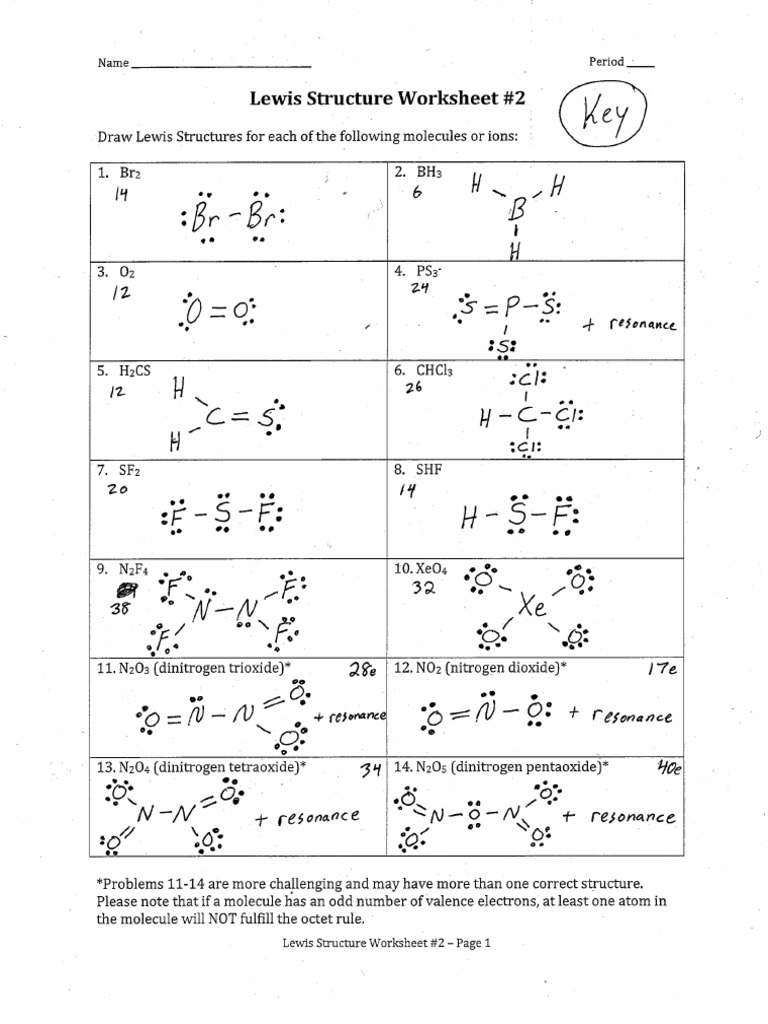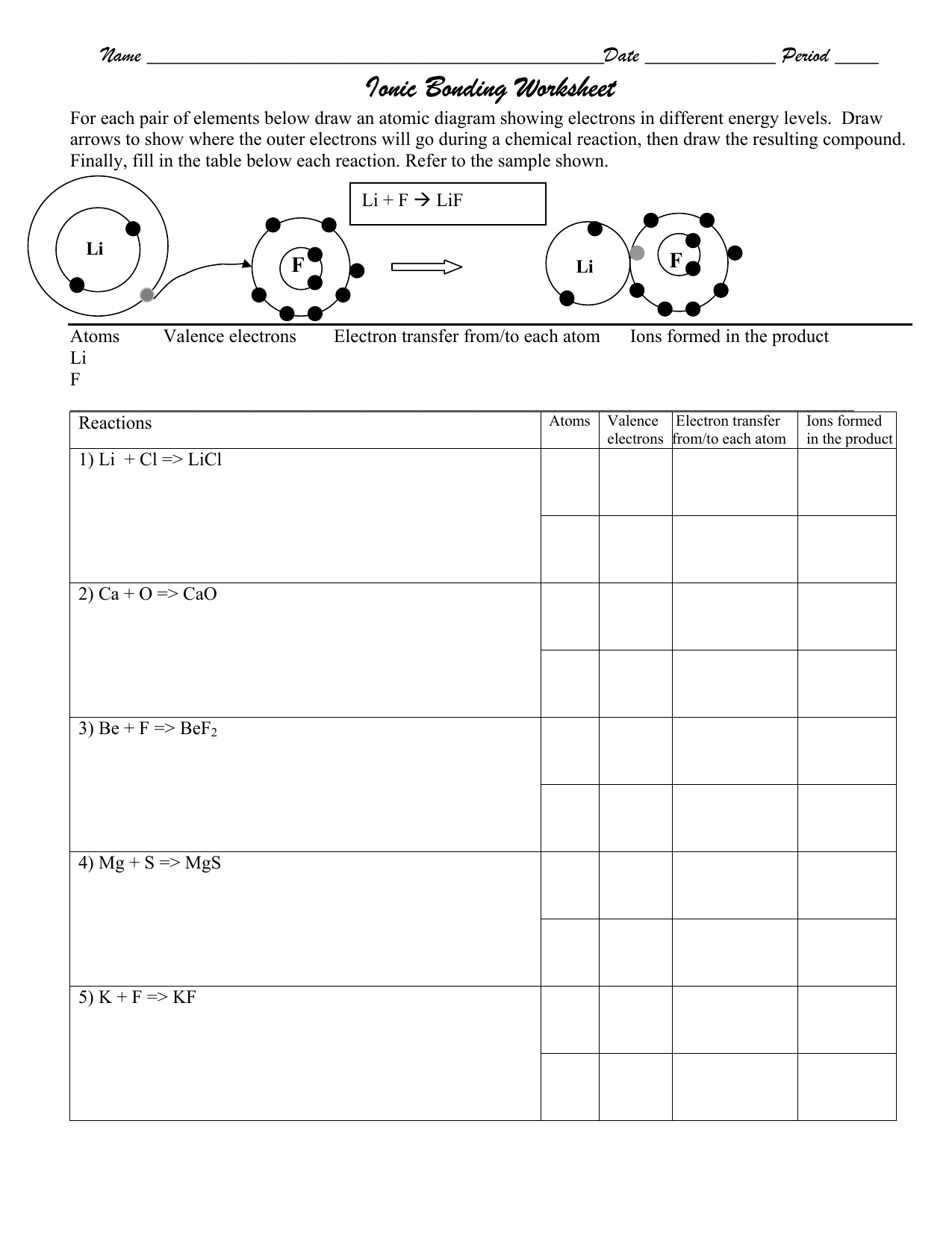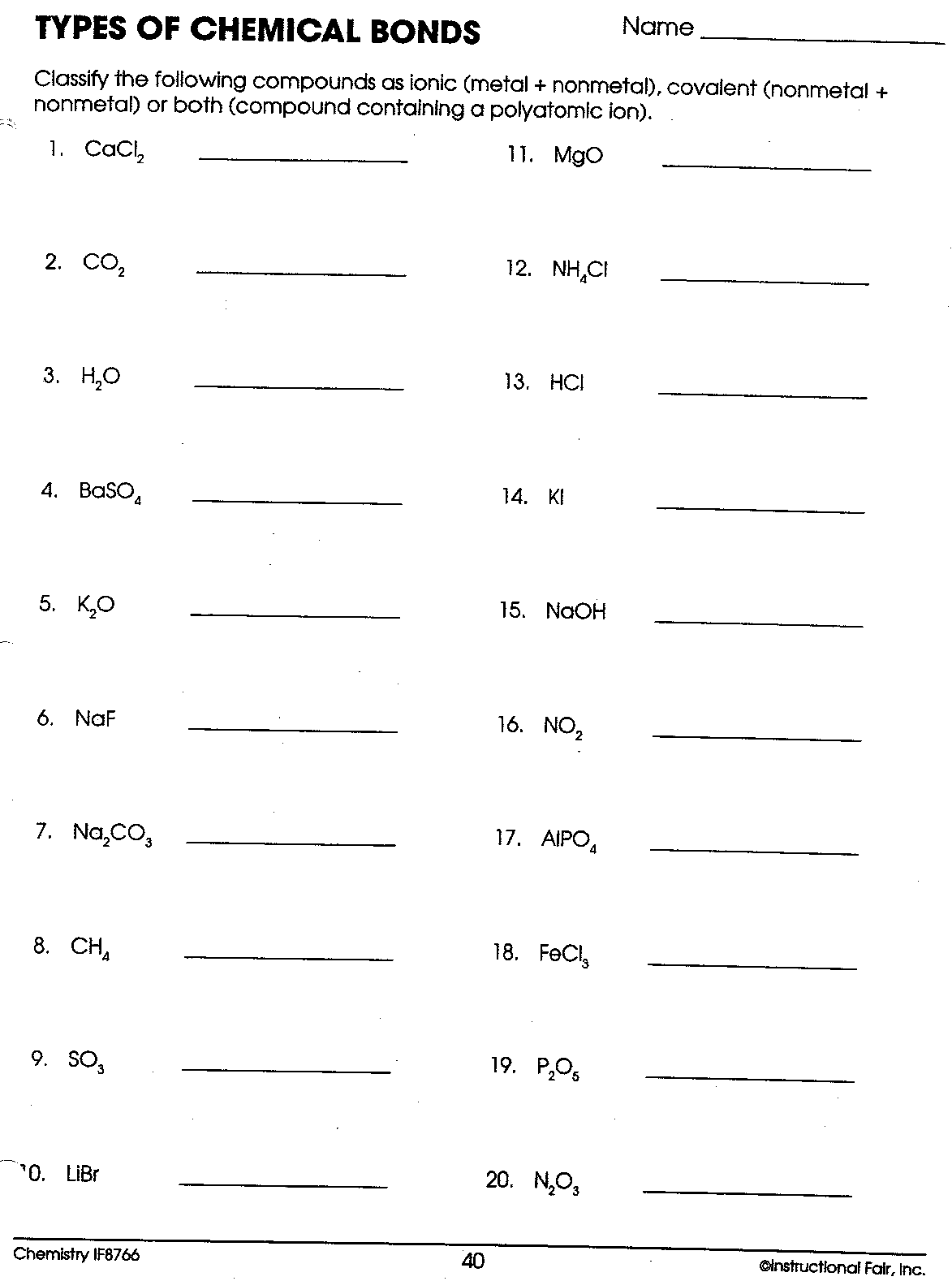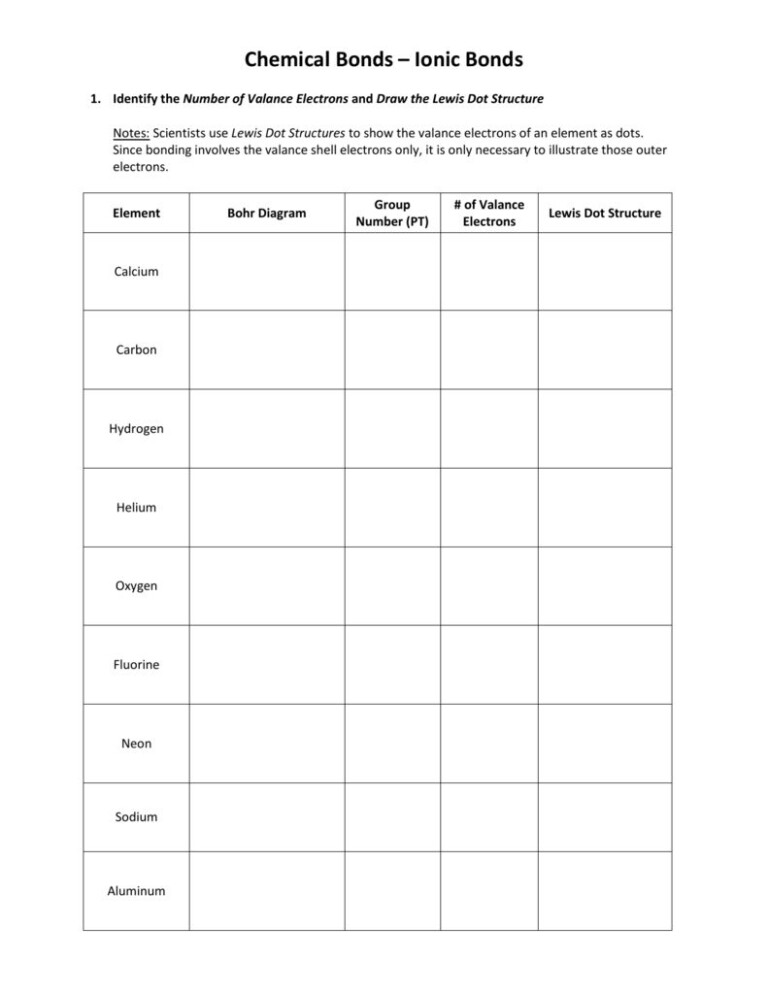Ionic Bonding Lewis Dot Structure Worksheet Answers - For each of the following elements, draw lewis dot diagrams and arrows to show the transfer of electrons. Model 1 substances are called ionic compounds and model 2 substances are called covalent molecules. An ionic bond is an attraction of a cation for an anion resulting from the transfer of electrons. Write a simple rule that will allow.
Write a simple rule that will allow. An ionic bond is an attraction of a cation for an anion resulting from the transfer of electrons. Model 1 substances are called ionic compounds and model 2 substances are called covalent molecules. For each of the following elements, draw lewis dot diagrams and arrows to show the transfer of electrons.
An ionic bond is an attraction of a cation for an anion resulting from the transfer of electrons. Write a simple rule that will allow. Model 1 substances are called ionic compounds and model 2 substances are called covalent molecules. For each of the following elements, draw lewis dot diagrams and arrows to show the transfer of electrons.
Ionic bonding worksheet with answers Studocu
An ionic bond is an attraction of a cation for an anion resulting from the transfer of electrons. Write a simple rule that will allow. Model 1 substances are called ionic compounds and model 2 substances are called covalent molecules. For each of the following elements, draw lewis dot diagrams and arrows to show the transfer of electrons.
Free Printable Lewis Dot Structure Worksheets
For each of the following elements, draw lewis dot diagrams and arrows to show the transfer of electrons. Write a simple rule that will allow. An ionic bond is an attraction of a cation for an anion resulting from the transfer of electrons. Model 1 substances are called ionic compounds and model 2 substances are called covalent molecules.
ChemE Lewis Structure Worksheet 2 Answers PDF
For each of the following elements, draw lewis dot diagrams and arrows to show the transfer of electrons. An ionic bond is an attraction of a cation for an anion resulting from the transfer of electrons. Model 1 substances are called ionic compounds and model 2 substances are called covalent molecules. Write a simple rule that will allow.
Ionic Bonding Lewis Dot Structure Worksheet Answers / Solved Chemical
For each of the following elements, draw lewis dot diagrams and arrows to show the transfer of electrons. An ionic bond is an attraction of a cation for an anion resulting from the transfer of electrons. Write a simple rule that will allow. Model 1 substances are called ionic compounds and model 2 substances are called covalent molecules.
Lewis Structure Worksheet 1 Answers
For each of the following elements, draw lewis dot diagrams and arrows to show the transfer of electrons. Write a simple rule that will allow. An ionic bond is an attraction of a cation for an anion resulting from the transfer of electrons. Model 1 substances are called ionic compounds and model 2 substances are called covalent molecules.
Practice Problems For Lewis Structure
Write a simple rule that will allow. An ionic bond is an attraction of a cation for an anion resulting from the transfer of electrons. Model 1 substances are called ionic compounds and model 2 substances are called covalent molecules. For each of the following elements, draw lewis dot diagrams and arrows to show the transfer of electrons.
Ionic & Covalent Bond Lewis or Electron Dot Diagrams Part 1 FREE
An ionic bond is an attraction of a cation for an anion resulting from the transfer of electrons. Write a simple rule that will allow. For each of the following elements, draw lewis dot diagrams and arrows to show the transfer of electrons. Model 1 substances are called ionic compounds and model 2 substances are called covalent molecules.
Ionic Bonding Worksheet
Model 1 substances are called ionic compounds and model 2 substances are called covalent molecules. Write a simple rule that will allow. For each of the following elements, draw lewis dot diagrams and arrows to show the transfer of electrons. An ionic bond is an attraction of a cation for an anion resulting from the transfer of electrons.
Ionic Bonding Practice Worksheets
An ionic bond is an attraction of a cation for an anion resulting from the transfer of electrons. For each of the following elements, draw lewis dot diagrams and arrows to show the transfer of electrons. Write a simple rule that will allow. Model 1 substances are called ionic compounds and model 2 substances are called covalent molecules.
Ionic Compounds Dot Diagrams Worksheet
For each of the following elements, draw lewis dot diagrams and arrows to show the transfer of electrons. Model 1 substances are called ionic compounds and model 2 substances are called covalent molecules. Write a simple rule that will allow. An ionic bond is an attraction of a cation for an anion resulting from the transfer of electrons.
For Each Of The Following Elements, Draw Lewis Dot Diagrams And Arrows To Show The Transfer Of Electrons.
An ionic bond is an attraction of a cation for an anion resulting from the transfer of electrons. Write a simple rule that will allow. Model 1 substances are called ionic compounds and model 2 substances are called covalent molecules.









